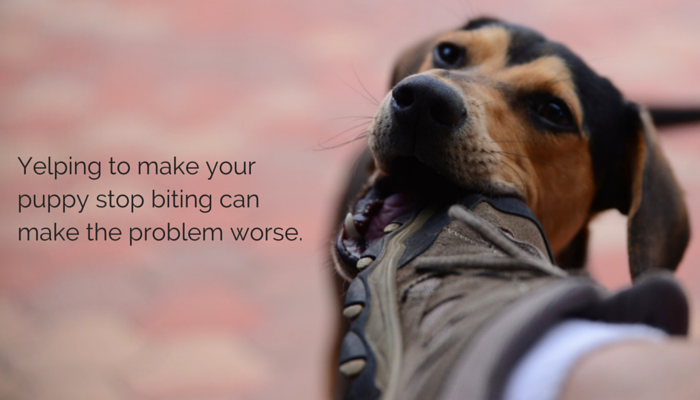10 Dog Training Tips I’m Tired of Hearing
Dog Training Has Come A Long Way
I’ve been obsessed with dogs for years, and I still remember vividly all those dogs books I owned back in the 80’s with all sorts of “solid” advice. Piles and piles of books, each one telling your how to choose and train your perfect dog. Some of the ones I remember quite well are:
- Did your dog pee on the carpet? Rub his nose in it so he knows he’s bad.
- Want to choose the nicest puppy? Alpha roll them to see which one is the most submissive. Any puppy that fights back is dominant and likely to be aggressive.
- To effectively train your dog they need to know who the pack leader is.
And this was the norm, I don’t recall hearing anything otherwise until the late 90s.
Luckily these dog training tips aren’t nearly as common anymore, they’re slowly being replaced by positive reinforcement methods. You’ll often see a lot of backlash when it comes to punishment methods, but that’s not to say that there’s still not a bunch of silly training tips and myths going around.
10 Dog Training Tips I’m Tired of Hearing
Though dog training has come a long way in the past few decades way there’s still some persistent tips & myths I’m sick of hearing. And I’m not just talking about the silliness of dominance theory either. Here’s 10 dog training tips I’m tired of hearing:
1. Be a Tree to Stop Your Dog Pulling on Leash
Do you know how many times I tried to be a tree on walks with Laika? 1329, or at least somewhere around there. And do you know how she reacted? She’d keep pulling, whining and looking at me like I was nuts.
I did this for months. Every time she’d pull I’d stop. Every step I made she’d start pulling again. It didn’t work, and from what I’ve been reading it didn’t work for your dog either.
Being a tree can work on puppies, or dogs that haven’t already learned that pulling keeps them moving forward. But if you’ve already taken your dog for a walk while he’s pulled you do yourself a favor & skip the be a tree advice. Move on to something that will work like using a front clip harness and using treats to teach your dog to follow you when walking.
The only time I think be a tree is solid advice is when you’re teaching children how to act around strange dogs.
2. Don’t Comfort Your Scared Dog, It’ll Just Reinforce Their Fear
Is your dog scared of storms or lightning? Better ignore them, that’ll certainly toughen them up. Or at least that’s how I imagine people who give this advice must feel. Seriously.
If you’ve ever known anyone that’s dealt with panic or anxiety you probably already know how horrible this advice is. One of the most effective ways to get over fear is to be confronted with it in a “safe” manner that includes being comforted if need be.
It’s becoming desensitized to scary situations by learning over time that nothing bad actually ends up happening during the trigger. That’s how many of us learn to confront fear – not by ignoring it.
I’m not the only one that finds this idea ridiculous. Here are two wonderful articles that discuss the topic further:
- It’s OK! to Comfort Your Dog! – Eileen and Dogs
- Please Comfort Your Dog When They Are Scared – Zoephee
By ignoring your dog during scary situations you could be making their fear worse.
3. Assume That Your Dog is Asserting Dominance & Using Punishment
One of the biggest training myths I hear is that dogs who walk ahead of you or go through doors before you are just asserting their dominance.
Dogs love going for walks, and let’s face it, their normal pace is a lot faster than ours. It’s a natural response to pull when you’re being held back from seeing, sniffing and exploring stuff that lies ahead. If your dog is pulling on leash it’s not because they’re trying to be dominant, it’s just normal. Unless you teach your dog to walk nicely on a loose leash they’ll probably continue to pull for years.
You know why most dogs pull? Because it works, not because they’re being dominant. If you’re not stopping them they’re going to keep on pulling like it’s no big deal.
Everyone has their own preference when it comes to the positioning of their dogs on a walk. Since 95% of my walks are done in our rural town with nothing but miles of dirt roads I’m pretty relaxed. Laika’s allowed to walk ahead of me and sniff around as long as she doesn’t pull.
The only bad thing about letting your dog walk ahead is the judgments from others. There’s constant shouts of “Whose walking who?” out of car windows every 5 minutes, but just like golfers having to deal with shouts of “FOUR!!!” all day long we get used to it.
4. Yelp When Your Puppy Bites, It’ll Make Him Stop
When I yelped and said ow to Laika when she was biting me as a pup she came back 10 times worse. That noise riled her up and did nothing to stop her puppy biting frenzy.
I don’t know if the problem is whether or not our dogs believe our yelps are believable or not, but there’s no quicker way to rile up my dog than to yelp at her. She still goes into a damn frenzy when I yelp, and it’s been over 4 years since we successfully completed her bite inhibition.
But when I’m actually in pain and say ow – that stops her immediately. So maybe our dogs can tell when we’re faking, or maybe it’s the “yelp” noise that triggers excitement. Either way when us humans try yelping it tends to rile up our dogs.
Yelping might work for a few dogs, but it makes a lot of them worse.
Giving your dog a toy to redirect his behavior each time he starts to bite can work wonders, yelping might make it worse.

5. Playing Tug Will Make Your Dog Aggressive
Tug is awesome, and it surprises me that this myth is still going around. There’s nothing aggressive about tug if your dog knows how to release the toy and isn’t biting your hands. You’re playing a simple interactive game with him which is one of the best ways to spend extra time with your dog.
Letting your dog win a game of tug doesn’t show weakness; it makes your dog want to engage with your more.
Tug is such an easy way for dogs to burn a bunch of energy and use some of their natural instincts in a fun, engaging way with their owner. I’ll always defend a game of tug, and thinking of it now I can’t even tell you how many hours I’ve spent playing it with Laika.
Dogs love to tug. Humans love to play with dogs. Anytime you and your dog can do something together that you both love, it strengthens the bond that holds you together through think or thin, good times or bad, until death do your part. The four to six million dogs who end up in shelters every year in this country are a stark reminder of how much those bonds need strengthening. – Whole Dog Journal
6. Dog Behavior is “All In How They’re Raised”
The old nature vs nurture question. What makes a dog behave a certain way? While proper socialization is important as well as human interaction it’s no guarantee that you’ll always end up with a perfectly behaved dog.
Yes we may influence our dog’s behavior, but it’s important to understand that nature also plays a role. How else can we explain how former fighting dogs become loyal and well adjusted companions? Or how someone whose done everything right “by the book” ends up with a dog that suffers from fear aggression. When we do nothing but focus on a dog’s history (how they’re raised) it stunts us from moving forward.
When our dogs exhibit behavior problems it’s our responsibility to figure out how to manage it, not just blame it on what’s happened in their past.
Ask any behaviorist what’s more important — nature or nurture — and they’ll answer “both.” Some dogs can be raised by the book, socialized to everything, and still become dangerously aggressive. – No, It’s Not All How They’re Raised
7. A Second Dog Will Help Separation Anxiety
It’s true that some dogs are lonely and could benefit from another canine friend, but a second dog is not a cure for separation anxiety.
In theory getting a second dog sounds legit; your new dog will help keep your current one company, right? Well in theory it doesn’t usually work out that way. Dogs that suffer from separation anxiety panic when their human leaves, it’s not just because they’re lonely.
When it comes to managing your dogs separation anxiety the tricky part will be identifying what events cause your dogs anxiety. If your dog starts to panic as you start to get ready for work every morning the best thing you can do is to start to desensitize them to that routine.
If your dog panics when you go to work the addition of another dog isn’t likely to help. Their anxiety will stay the same, and in some cases your anxious dog might pass those troublesome behaviors onto the new one.
Treating separation anxiety is a complex issue, if your dog suffers from it here’s a few helpful sources on treating it:
- Don’t Leave Me! (affiliate link) – Nicole Wilde
- Separation Anxiety – ASPCA
If you’re going to be adding another dog to the family make sure it’s because you want one, not because you hope it will help your current dog.
8. Assuming That Your Dog Is Misbehaving Out of Spite
Dog’s don’t do things to make you mad on purpose, and they don’t plan things to do out of spite.
Many behavioral problems stem from boredom or anxiety. Giving your dog a structured and meaningful routine with plenty of mental & physical activity will cut down on many troublesome behaviors.
Did your dog behave well this weekend but act like a maniac on Monday? Think back about what you do each day and how your dog behaves afterward. Does he do well after a long walk & game of fetch? Add more of that into his daily routine.
Does he nap after playing a game of tug or ‘find the treats?’ Do more of that.
Find activities that keep your dog physically & mentally engaged, if you don’t they’ll come up with their own idea of fun and it’s probably not going to be something you enjoy.
While people may exercise, chew on their nails or have a drink to relieve tension, dogs tend to chew, dig, lick excessively, pace or housesoil when anxious. Because destructive behavior has many potential causes, a careful analysis of the dog’s history and environment is necessary to help identify the cause of the problem so that effective behavior modification techniques can be recommended. – Animal Humane Society
9. Assuming That Dogs Will Just “Grow Out Of It”
Unless you’re talking about that collar you bought for your Lab puppy you’re mistaken.
Dogs learn how to behave from us, the transition into a well behaved dog isn’t just nature taking its course. If you’re dog is exhibiting behaviors you don’t like it’s your job to manage the situation.
A puppy that never learns bite inhibition will grow up into a mouth dog. Your pup that jumps up on guests is going to keep doing so unless you intervene.
“Bad manners” isn’t something you have to accept, and it’s up to you to teach him how to behave properly. Sure some dogs might be easier to train than others, but all dogs need some basic manners. Your dog, your house – you decide what those basic manners will be.
10. You Can’t Train (Dog Breed Goes Here) Because They’re Stubborn
I get it. Training dogs isn’t always easy, and it’s different for each dog. Even dogs from the same little can be motivated by different rewards.
But that’s not an excuse to give up because you haven’t found what works for your dog. Some dogs don’t care about treats so you train with a tug toy in hand, others don’t like to play so you reward them by going outside.
All dogs are different, and each has their own set of rewards they’re willing to work for.
The truth is, dogs in many ways are just like people. Some dogs will pick things up very quickly and others will take more time and guidance. Often times when we as trainers see a dog having difficulty learning a task, it’s because the dog is not being communicated to in a way that the dog can understand. – Association of Professional Dog Trainers (APDT)
You see a lot of Retrievers as service or guide dogs because they’re generally predictable – but other dogs can excel in that job as well. There’s a lot of great organizations out there (like SE Michigan’s Stiggy’s Dogs) that train shelter dogs to become service dogs for veterans.
Every dog has potential, it’s up to you to find out how to motivate them to reach it.
What Training Tips Are You Tired of Hearing?
Have you tried any of these with success? What other tips are you sick of hearing?

